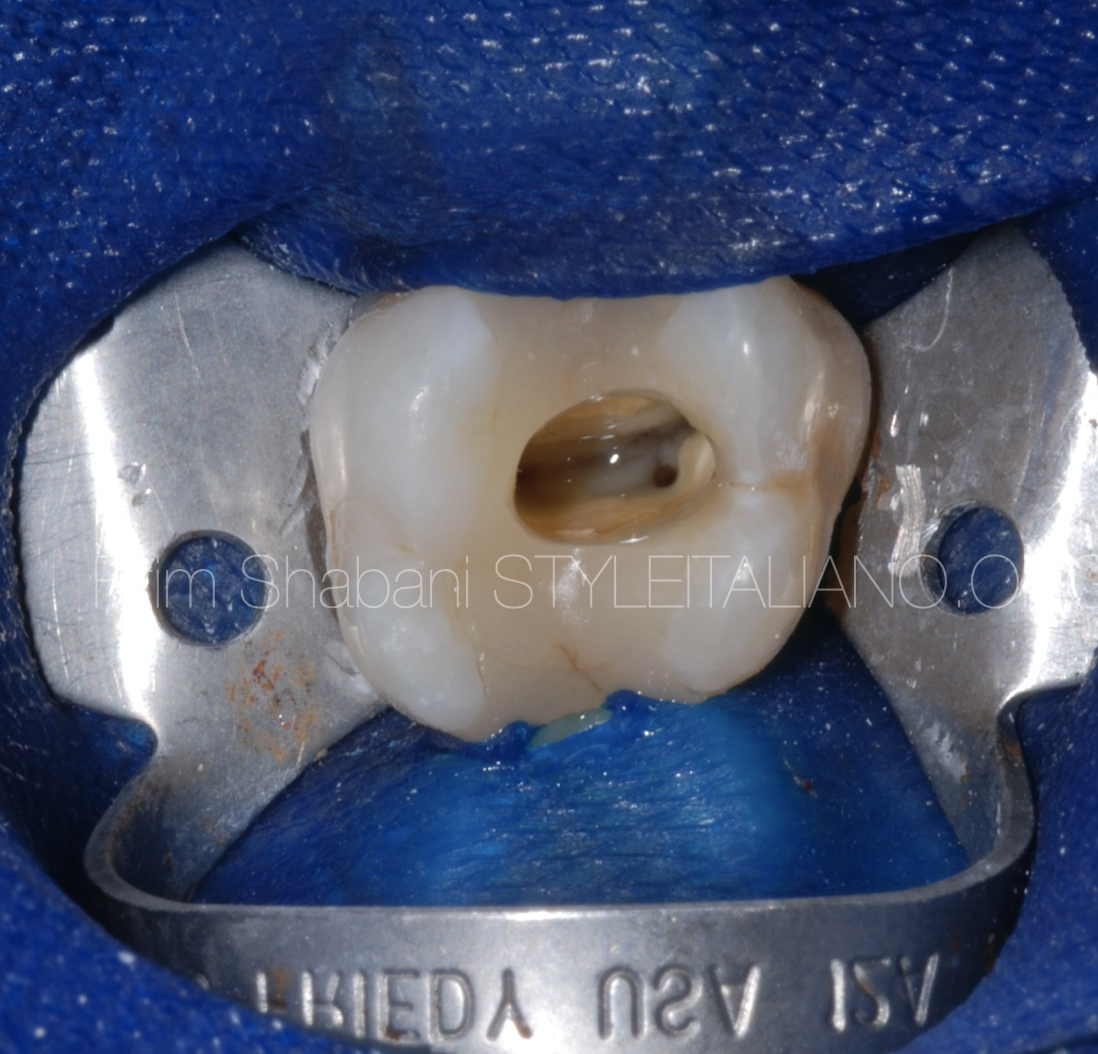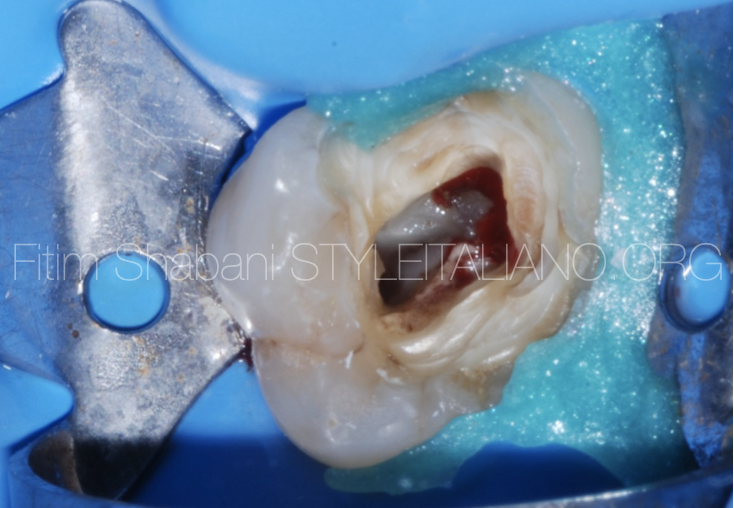In the context of retreatments and re-access, sometimes it happens to perform a new endodontic therapy recovering the old prosthetic crown. A careful preoperative evaluation can allow the clinician to […]
 Redefining the access in retreatments: Part IV of V
Redefining the access in retreatments: Part IV of V
In the context of retreatments and re-access, sometimes it happens to perform a new endodontic therapy recovering the old prosthetic crown. A careful preoperative evaluation can allow the clinician to […]
 Cavity refinement: an essentiality or extravagance?
Cavity refinement: an essentiality or extravagance?
Access cavity preparation is considered as the most important step in the endodontic treatment protocol. Inability of the operator to visualize anatomical requirements of the preparation may end in aggressive […]
 Three Years Follow-up of Large Lesion Treated With MTA Apical Plug
Three Years Follow-up of Large Lesion Treated With MTA Apical Plug
The goal of Endodontic treatment is to cure or prevent apical periodontitis (Ørstavik & Pitt Ford 2008). Endodontic treatment does not end when the root canal being filled, but when […]
 Finding the MB2 - part 2
Finding the MB2 - part 2
Finding the second buccomesial canal of the first maxillary molars called MB2 is a challenge for any dentist due to its localization and anatomy. The MB2 canal is usually located […]
 Redefining the access in retreatments: Part III of V. The crown access management
Redefining the access in retreatments: Part III of V. The crown access management
In the context of retreatments and re-access, it often happens to perform a new endodontic therapy dealing with the presence of a crown. A careful pre-operative evaluation can allow the […]
 Management of the complex anatomy of a lower first premolar
Management of the complex anatomy of a lower first premolar
An accurate diagnosis of the morphology of the root canal system is crucial in order to obtain a successful root canal treatment. The prevalence of three canals with three separate […]
 Management of a retreatment case (RADIX ENTOMOLARIS) with FANTA AF F ONE ESSENTIAL KIT
Management of a retreatment case (RADIX ENTOMOLARIS) with FANTA AF F ONE ESSENTIAL KIT
A more reflecting practical definition of non surgical retreatment by Car was described as a procedure performed on teeth that received failed prior attempts at definitive root canal treatment, requiring […]
 Management of Missed Canal Part 1: Lower First Molar
Management of Missed Canal Part 1: Lower First Molar
It is reported that almost 40% of retreatment with chronic apical periodontitis or symptomatic apical periodontitis are due to missed canals. Karabucak & all reported in 2016 an overall incidence […]
 Management of Iatrogenic Furcal Perforation in tooth with obliterated root canal
Management of Iatrogenic Furcal Perforation in tooth with obliterated root canal
Perforation is a pathologic or iatrogenic communication between root canal system and the supporting tissues of teeth or the oral cavity. Root perforations are common complications of endodontic treatment or […]
 Finding the MB2 - part 1
Finding the MB2 - part 1
The famous MB2 canal, which has been studied extensively, has become so popular that it has become a common topic among dentists, especially endodontists. Many studies have shown that not […]
 Management of a retreatment case with multiple endodontic mishaps
Management of a retreatment case with multiple endodontic mishaps
Endodontic mishaps can interfere with the healing process of the body and can result in failure of the root canal treatment if not taken care of. Perforation, if present should […]
 The Multidisciplinary approach
The Multidisciplinary approach
During our daily treatments we often face different situations where many disciplines of dentistry intertwine with each other, in some treatments we have the need for secondary treatments. In this […]